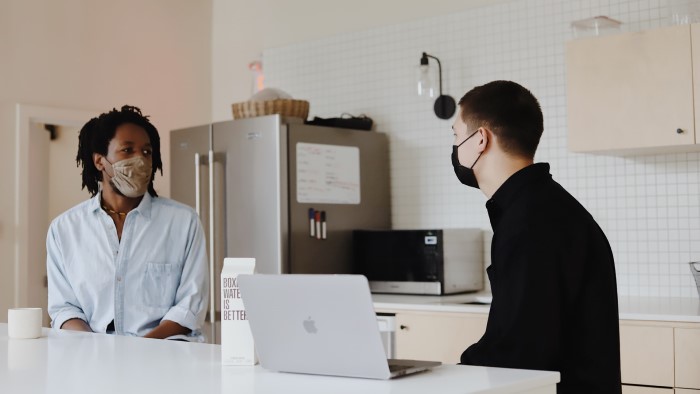How to Bring Back Remote Employees During the Pandemic

3 HR Mistakes to Avoid During Open Enrollment
June 8, 2021
Now Playing at a Horizon Near You
June 29, 2021Returning to the office is not the same as returning to a pre-pandemic sense of “normal.” A lot has changed since the Michigan shutdown in March 2020 and will continue to change. As such, it’s more important than ever that you have a plan in place before you bring your workforce back into the office.
Here’s what we recommend.
Determine Who Will Return to the Workplace
Just because an employee can work from home, doesn’t mean it’s ideal. Many employees don’t have the proper technology, office supplies, and space to get their work done. As a result, many people have been working from their dining room tables or couches—sometimes for months.
Each business and industry is different. For that reason, you’ll need to follow state and federal guidelines to determine who can return to the workplace and when.
You’ll also need to think about how much space you have in your work environment. For example, unvaccinated employees will need to be at least 6 feet apart from their co-workers at all times. Vaccinated employees, however, aren’t required to practice social distancing.
Employees with pre-existing conditions may require special consideration as they’re more vulnerable to complications from COVID-19. As such, you may want to keep certain at-risk employees remote on a case-by-case basis.
Related: How to Train Remote Employees →
Keep Your Employees Informed
We’re all in this together. That’s why it’s important that you inform your employees of what has changed since they were last in the office.
Draft an office policy that’s both comprehensive and easy to understand. Also, make sure that employees have a chance to read the new policy before they return to the office so they have time to ask questions.
Your office policy will need to be compliant with OSHA and CDC guidelines. There should also be a contingency plan in place in the event someone from your team tests positive for COVID-19.
Since the pandemic is ongoing, be sure to monitor any changes in the guidelines and keep your employees informed.
Create a Health Screening Process
Many businesses require their employees to complete daily health screenings, including a temperature check. They may also screen visitors to help maintain a safe, clean work environment.
We recommend setting up a station near the entrance of your building where employees and visitors can take their own temperature and fill out a brief health survey.
While it may seem like an inconvenience, this can help prevent sick individuals from entering your building and creating a hotspot for COVID-19.
Plan for Social Distancing as Much as Possible
Unvaccinated employees will need to practice social distancing, which may change how you use your office space. For example, if you have a waiting room or lobby, you may want to limit how many people can come in at one time.
To solve this problem, some businesses are asking customers to call from the parking lot to let them know they’ve arrived.
You may also want to consider creating schedules that help your employees practice social distancing as much as possible. This may involve assigning different break and lunch times to employees to avoid crowding in common areas.
If social distancing isn’t possible in certain areas, you may want to temporarily close them or set up barriers.
Provide PPE and a Safe Work Environment
Provide personal protective equipment (PPE) for your employees, such as masks. Depending on what type of business you run, you may want to provide free masks for your visitors too. Also, make sure you provide hand sanitizer and other essential sanitation items through your workspace.
Not all PPE is created equal so make sure you select something that’s appropriate for your workplace’s risk level.
Request a Quote From Michigan Planners
Michigan Planners is a group insurance brokerage company that also offers coverage for individuals. To learn how we can help you shop for competitive rates, please call Michigan Planners at (800) 674-9235. You may also fill out our online contact form and someone from our team will reach out to you soon.
Attention: Don’t Miss Our Upcoming Webinar!
Did you find our blog post valuable? If so, consider registering for our webinar on June 21st. During the webinar, Anne-Marie Welch and Amy McGeorge will be presenting on how to navigate the return to work. Contact Kurt Swartz with any questions at [email protected] or (231) 346-1055.

